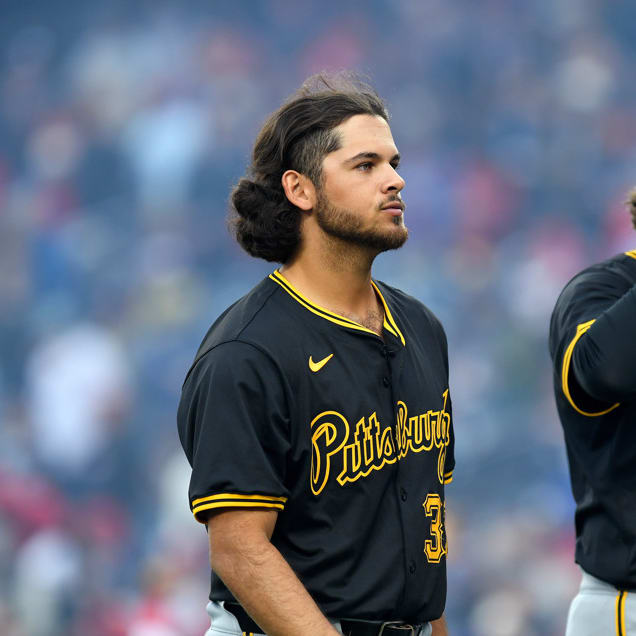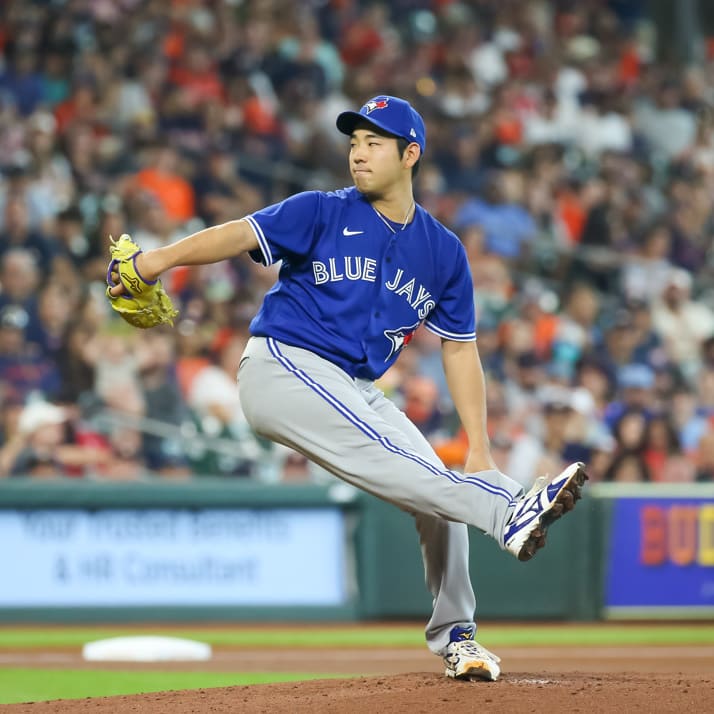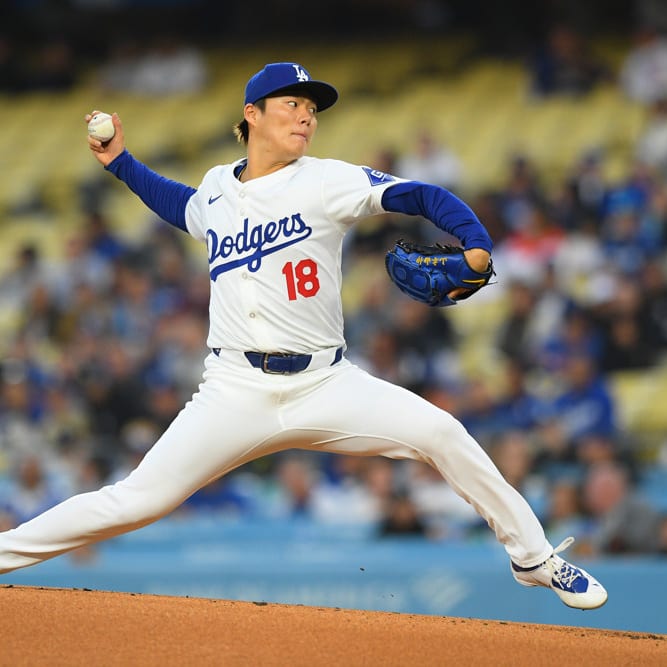This article is part of our Scouting Pitchers series.
Scouting Pitchers: Spring Training Wrap-Up - Major League Strikeout Leaders
Ah, strikeouts. Nothing warms the heart of the fantasy owner in search of good pitching more. Punchouts reveal several positive things about a pitcher's performance. They show the pitcher is throwing with decent velocity, are a good indicator of a pitcher's health, and suggest the presence of more than just a fastball working. It's hard to strike out twenty or thirty hitters over a month with just a fastball, no matter how hard one throws.
Strikeouts during spring training, while taken with the usual caveats, suggest that a pitcher has enough velocity at 75-85% effort to be effective. This ability bodes well for their chances to stay healthy over the course of the season. Putting up 200 innings is difficult enough. If a pitcher can accomplish part of this while not giving 100%, so much the better.
With this in mind, let's take a look at the leaders in strikeouts in Cactus and Grapefruit League action. I'll put up a summary of their statistics, their current role, and a suggested dollar value from our MLB draft kit.
1. Francisco Liriano (2-0, 2.70 ERA, 20 IP, 5 BB, 30 K): Twins' #5. RotoWire value: $5. With the move of Jon Rauch to the closer role in Joe Nathan's absence, the Twins are counting on Liriano to give them innings. Liriano has been in the low-to-mid-90s this spring, and the life on his slider and changeup has been better in
Scouting Pitchers: Spring Training Wrap-Up - Major League Strikeout Leaders
Ah, strikeouts. Nothing warms the heart of the fantasy owner in search of good pitching more. Punchouts reveal several positive things about a pitcher's performance. They show the pitcher is throwing with decent velocity, are a good indicator of a pitcher's health, and suggest the presence of more than just a fastball working. It's hard to strike out twenty or thirty hitters over a month with just a fastball, no matter how hard one throws.
Strikeouts during spring training, while taken with the usual caveats, suggest that a pitcher has enough velocity at 75-85% effort to be effective. This ability bodes well for their chances to stay healthy over the course of the season. Putting up 200 innings is difficult enough. If a pitcher can accomplish part of this while not giving 100%, so much the better.
With this in mind, let's take a look at the leaders in strikeouts in Cactus and Grapefruit League action. I'll put up a summary of their statistics, their current role, and a suggested dollar value from our MLB draft kit.
1. Francisco Liriano (2-0, 2.70 ERA, 20 IP, 5 BB, 30 K): Twins' #5. RotoWire value: $5. With the move of Jon Rauch to the closer role in Joe Nathan's absence, the Twins are counting on Liriano to give them innings. Liriano has been in the low-to-mid-90s this spring, and the life on his slider and changeup has been better in his second year back from Tommy John surgery. His motion still makes me queasy, as I don't see many 200-inning starters throw across their body to that degree. He should be fine in 2010, though.
2. Justin Masterson (1-2, 5.14, 21 IP, 6 BB, 29 K): Indians' #3. RotoWire value: $-4. His strong spring performance portends very well for 2010. I've always liked Masterson's stuff, and it looks to me as though he'll emerge in a big way this year.
3. Matt Garza (2-1, 2.28, 28 IP, 6 BB, 27 K): Rays' #2. RotoWire value: $14. Garza threw 200 innings for the first time in 2009, and it won't be the last. The Rays are going to be a very competitive team in the AL East, and they will need Garza throwing his usual 92-94 with two breaking balls and a changeup. It will be interesting to see whether the Rays can lock him up with a long-term deal, because he will be very expensive if he pitches to his abilities.
4. Jonathan Sanchez (3-1, 3.62, 27 IP, 15 BB, 26 K): Giants' #4. RotoWire value: $7. Sanchez made some progress in 2009, but his weaknesses - across-the-body motion, health and control – are still there. His 80-83 mph slider remains one of the best pitches in the NL, and he has enough fastball (89-93) to back it up. Some pitchers – Ted Lilly, Javier Vazquez – post high ERAs early in their career despite high strikeout rates, and gain regular effectiveness later. I'm not saying Sanchez will be one of those pitchers, but he might be.
5. Ryan Dempster (2-0, 2.13, 25 IP, 7 BB, 25 K): Cubs' #2. RotoWire value: $16. There aren't many holes in Dempster's statistical profile. He has refined his control and efficiency methodically over the years, and does a good job of keeping the ball on the ground. His 84-86 mph slider has been biting this spring, and he doesn't mind pitching inside to hitters at 89-91 mph.
6. Gio Gonzalez (1-2, 2.96, 24 IP, 13 BB, 25 K): Athletics' #5. RotoWire value: $2. It's hard to know exactly what to forecast from Gonzalez. He has significant positives: high strikeout totals, a good health record, a big ballpark, an excellent (78-81 mph) curveball, and a decent team. Yet he still needs to improve his efficiency and stop issuing so many walks. I like him, but with a limited investment in 2010.
7. Jorge de la Rosa (3-1, 1.50, 30 IP, 7 BB, 24 K): Rockies' #3. RotoWire value: $7. You had to feel badly for de la Rosa missing the playoffs last year with a bad hamstring, given all he surmounted to get there. Check out his lifetime statistics here. If he didn't pitch in Colorado, de la Rosa's fastball-slider combination might land him a Gil Meche-type "late bloomer" contract in a year or two. We'll see if he can stay healthy enough to cash in on his improved control.
8. Jeff Niemann (3-0, 2.49, 25 IP, 3 BB, 24 K): Rays' #3. RotoWire value: $10. A year ago, in my pre-season RotoWire magazine article "Fifty to Pick Up," I touted Niemann as someone who deserved a chance to emerge. A year later, he fulfilled that promise, and that article was nominated for a FSWA award. Niemann is now at 90-92 with good downward movement on his fastball, and his mid-70s curve and mid-80s splitter are also quality pitches. I am always guarded about starters who rely on a splitter, but Niemann looks solid for 2010.
9. John Danks (2-1, 4.15, 30 IP, 12 BB, 23 K): White Sox' #4. RotoWire value: $17. Danks' velocity has declined from when he came up, as he now throws the proverbial 89-92. He has compensated with good command of his 80-83 mph changeup, and it is one of the best in the AL. He has reportedly been working on his curveball this spring, but we'll see if he turns to it in a pressure situation in August. I've always liked Danks, not as a Cy Young winner but as a reliable 200-inning option.
10. Scott Baker (3-1, 4.50, 22 IP, 3 BB, 22 K): Twins' #1. RotoWire value: $19. I preached caution on Baker in my AL season preview. He pitched very well in the second half of 2009 (8-2, 3.28), but I'm just not convinced he can make 33 starts a year with his motion. With the added publicity around the Twins this year, Baker has been receiving a lot of press. I think that will drive up his price, so I'd look elsewhere for a bargain or a safer bet.
11. Josh Beckett (1-1, 3.72, 19 IP, 5 BB, 22 K): Red Sox' #1. RotoWire value: $19. Hit hard by the Yankees on Opening Day, Beckett entered 2010 looking to cement his market value for his next contract, but the Red Sox locked him up with a four-year, $68 million extension earlier this week. Beckett has a 91-96 mph fastball, a mid-80s changeup and a 70-76 mph curveball. His pitches are not as dominant as they were, but his command has improved, and he pitches all over the strike zone.
12. Gavin Floyd (1-2, 4.05, 20 IP, 8 BB, 22K): White Sox' #3. RotoWire value: $15. Perhaps it's just the bargain-hunter in me, but I see Floyd in the same boat as Scott Baker: good stuff and pitching sense, an iffy delivery, and overpriced. At his best, Baker throws four pitches with the same motion, and he is very efficient (15.4 P/IP in 2009). He has also steadily improved his G/F ratio (0.85 in 2009). I just see him as someone who will break down. Who knows - that could happen in 2012, after he has made me look bad.
13. Dan Haren (1-3, 5.25, 24 IP, 5 BB, 22 K): Diamondbacks' #1. RotoWire value: $31. Arizona's staff will be key to their playoff hopes in 2010. While they aren't likely to make noise in October without the health of Brandon Webb, they wouldn't go anywhere without Haren. He gets great downward movement on his 89-92 mph fastball, tight mid-80s slider and dipping 82-86 mph splitter. Haren reminds me of Curt Schilling, with their splitters and great control, although Schilling worked upstairs more often.
14. Clayton Kershaw (2-0, 2.25, 20 IP, 9 BB, 22 K): Dodgers' #2. RotoWire value: $19. It's tempting to forecast instant greatness for Kershaw, given his 93-95 mph fastball and 71-77 mph curve and good sophomore season in 2009. He has even been working on his low-80s slider and changeup, according to the LA Times. The changeup doesn't have a great deal of movement, but it will be effective if he throws it for strikes. Hopefully, Kershaw's early entrance to the majors will not deprive him of his 97 mph fastball by the time he is 27.
15. Jon Lester (1-2, 3.12, 26 IP, 10 BB, 22 K): Red Sox' #2. RotoWire value: $20. Lester has been praised this spring by some baseball royalty: Hank Aaron in the Arizona press, and Jim Palmer in the Boston Herald. Lester has refined his 86-90 mph cut fastball, which seems to have increased in velocity. His four-seamer reaches 95, and he also throws a low-80s changeup and a 70-75 mph curveball. Draft with confidence.
16. Ramon Ortiz (2-0, 0.96, 19 IP, 4 BB, 22 K): Dodgers' #5, for now. RotoWire value: NA. After pitching in Japan in 2008 (4-7, 5.82 in 17 starts) and logging 130 innings for the Giants' Triple-A affiliate in 2008, Ortiz earned a spot with LA this spring with this good work. He hasn't posted an ERA below 5.00 in the major leagues since 2004, although no one seems to have tried to use him simply out of the bullpen.
17. C.J. Wilson (0-2, 3.24, 25 IP, 8 BB, 22K): Rangers' #3. RotoWire value: $-2. With 261 strikeouts in 281 major league innings, Wilson has always had good stuff: an 88-93 mph fastball he moves in and out, as well as a low-80s slider. Texas is hoping they can transition Wilson to starting at the age of 29 as they did with Kenny Rogers in 1993, when he was 28. Wilson's intensity may be better suited to throwing 80-90 pitches than 30, and his control appears OK. I'd still like to see if he can work in a changeup before endorsing him.
18. Chris Young (2-0, 3.32, 21 IP, 1 BB, 13 K): Padres' #1. RotoWire value: $1. I haven't been the biggest fan of Young, with his short-armed Gavin Floyd-type motion and fly ball tendencies. Yet one must acknowledge that his work this spring has been impressive, and he will be pitching for new contract in 2010. Young works with four pitches, but his best is a 75-79 mph changeup that must look like it's coming off of Mount Rushmore.
19. Dana Eveland (0-1, 1.80, 25 IP, 6 BB, 21 K): Blue Jays' #5. RotoWire value: NA. Eveland was decent for Oakland in 2008, when I profiled him. He posted a 4.94 ERA in 21 starts at Triple-A last year, so the A's shipped him to Toronto in February. I haven't seen Eveland pitch for a year and a half. He isn't a junkballer, so Toronto should get 150 mediocre innings out of him.
20. Rich Harden (1-3, 8.87, 22 IP, 2 BB, 15 K): Rangers' #2. RotoWire value: $4. I saw Harden throw last week in Arizona against Seattle, and he was about as I expected: 90-92 mph fastball with low-80s sliders and splitters. He seems to have gained control of his off-speed stuff at the same time as his fastball as declined. I'm not a fan of the split-fingered fastball, so I believe these developments are related in Harden's case. The Rangers will have a good team in 2010, but I doubt that Harden will finish the season as their No. 2.
21. Brian Matusz (1-2, 2.59, 24 IP, 0 BB, 3 K): Orioles' #4. RotoWire value: $2. Baltimore's first-round pick in 2008 out of UC-San Diego, Matusz seems to be the hot choice for AL Rookie of the Year in 2010. This includes fantasy guru Joe Sheehan. Some caution is advised. Matusz has had a very short (113 innings) minor league apprenticeship. Some recent history: David Price had 144 innings in the minors, and a 4.42 ERA in 128 innings last year. There aren't many successful starting pitchers in the AL each year under 25, despite the occasional Rick Porcello. I predict 160 innings with a 4.60 ERA for Matusz.
22. Ricky Nolasco (3-0, 1.78, 25 IP, 1 BB, 21 K): Marlins' #2. RotoWire value: $16. Here's a control pitcher who has really converted people. Nolasco struck out a phenomenal 48 batters last September, including sixteen in his last start on September 30. He has a 90-94 mph fastball and two different breaking balls. He does need help behind him, and the Marlins' young defense will be a work in progress.
23. Chris Carpenter (2-1, 5.40, 20 IP, 9 BB, 20 K): Cardinals' #1. RotoWire value: $30. As usual, it's all about health for Carpenter. He has been fine this spring, sporting his low-90s moving fastball, big curveball and slider. Carpenter pitches inside effectively and throws on a downward plane, giving him an above-average G/F ratio (1.33 lifetime). He is also extremely efficient (13.9 P/IP lifetime) and doesn't walk anybody, so there are really no weaknesses in his statistical profile.
24. Jaime Garcia (0-1, 3.00, 24 IP, 5 BB, 20 K): Cardinals' #5. RotoWire value: $-7. This Mexican-born farmhand has worked his way back from September 2008 Tommy John surgery to earn the fifth starter spot. The St. Louis Post-Dispatch wrote a great article on his story a week ago. I haven't seen Garcia throw since his return from the operating table, so I'll check out his first couple of starts and report back on him.
25. David Hernandez (1-1, 3.00, 15 IP, 3 BB, 20 K): Orioles' #5. RotoWire value: $-6. Hernandez is primarily a breaking-ball pitcher, with low-80s slurves and changeups to bolster his 87-94 mph fastball. He was a 16th-round pick in 2005. Hernandez kind of looks like Sidney Ponson on the mound. It's hard to say exactly what the Orioles have in him, but the results won't be pretty in 2010.
Article first appeared 4/6/10









